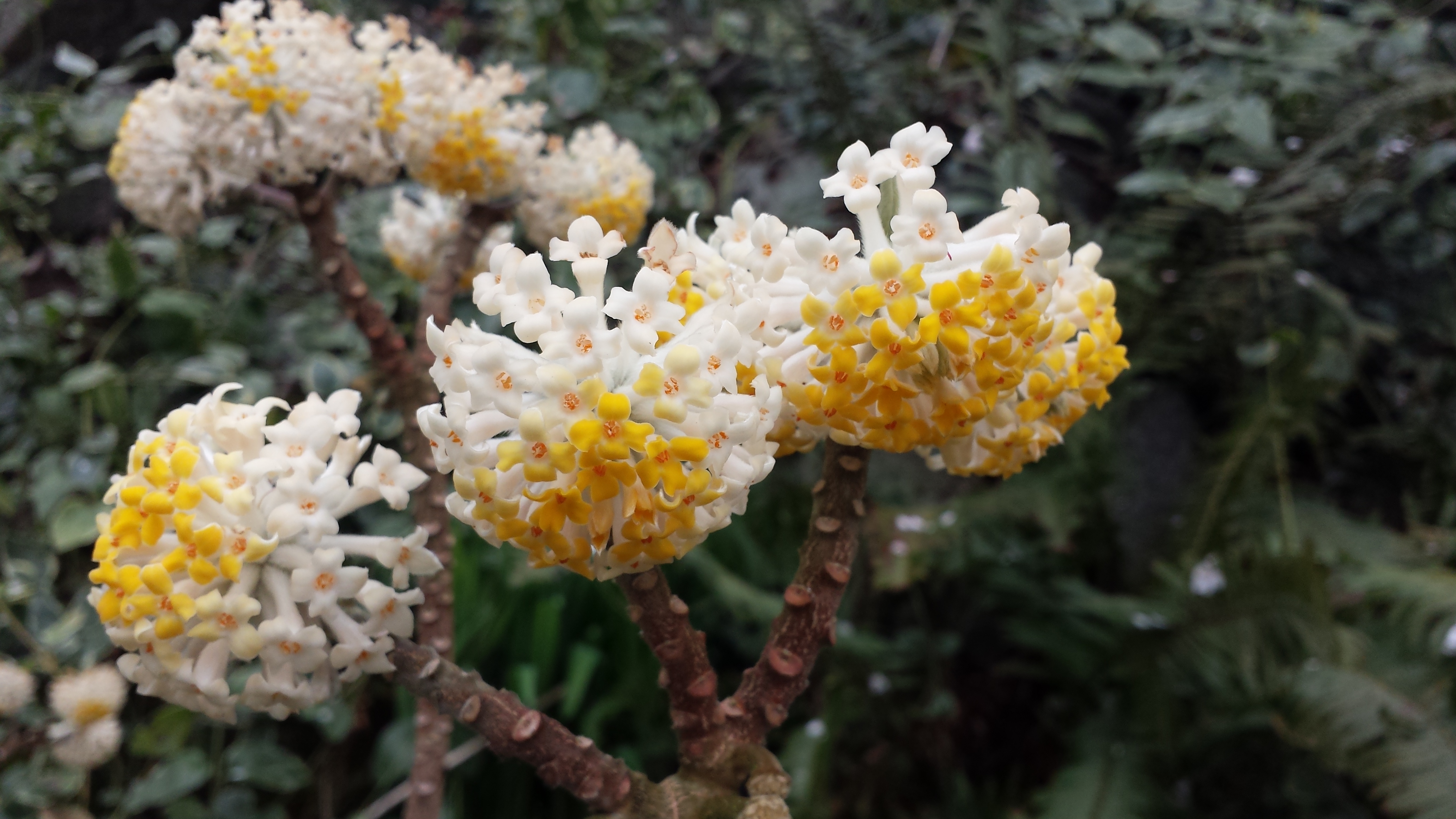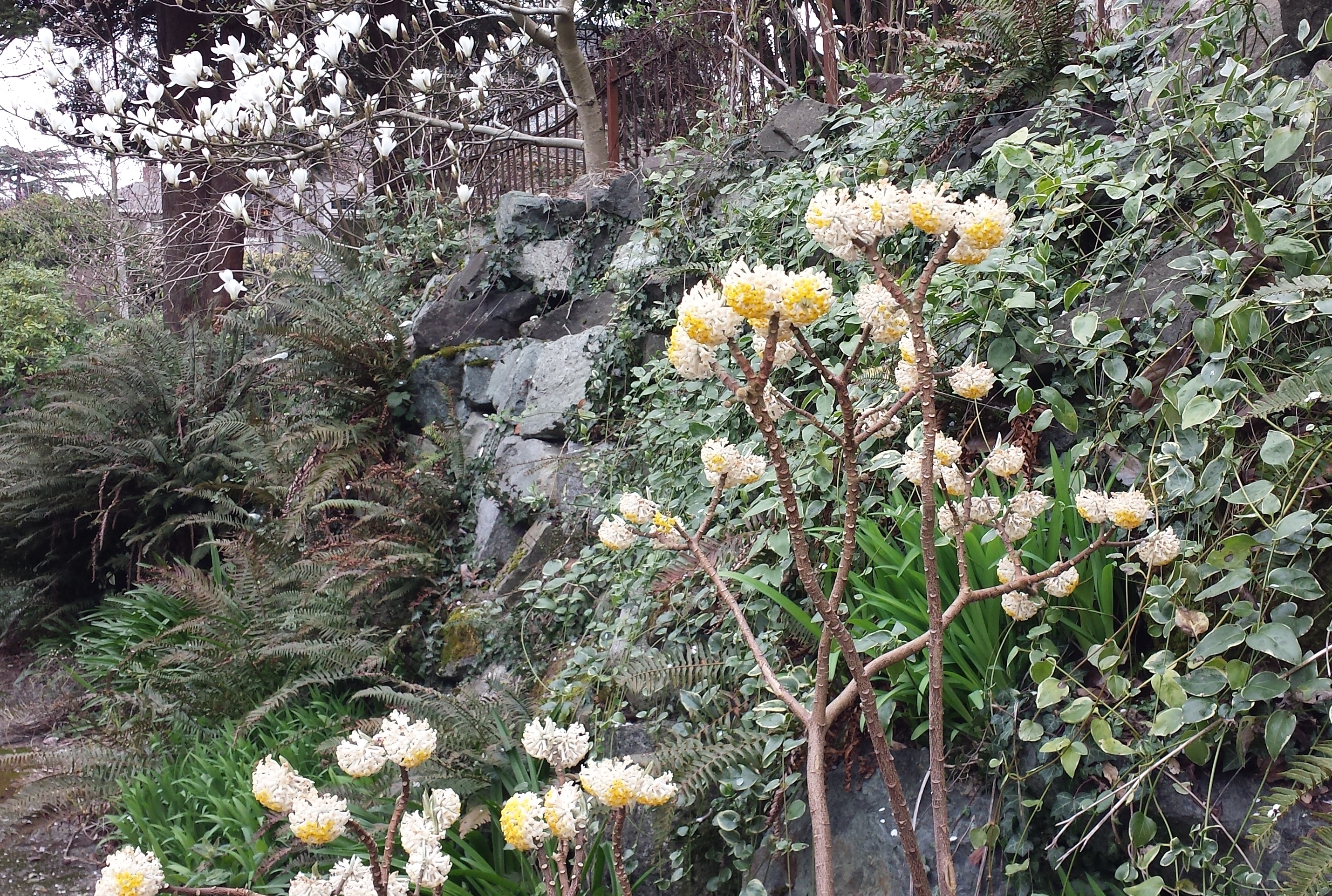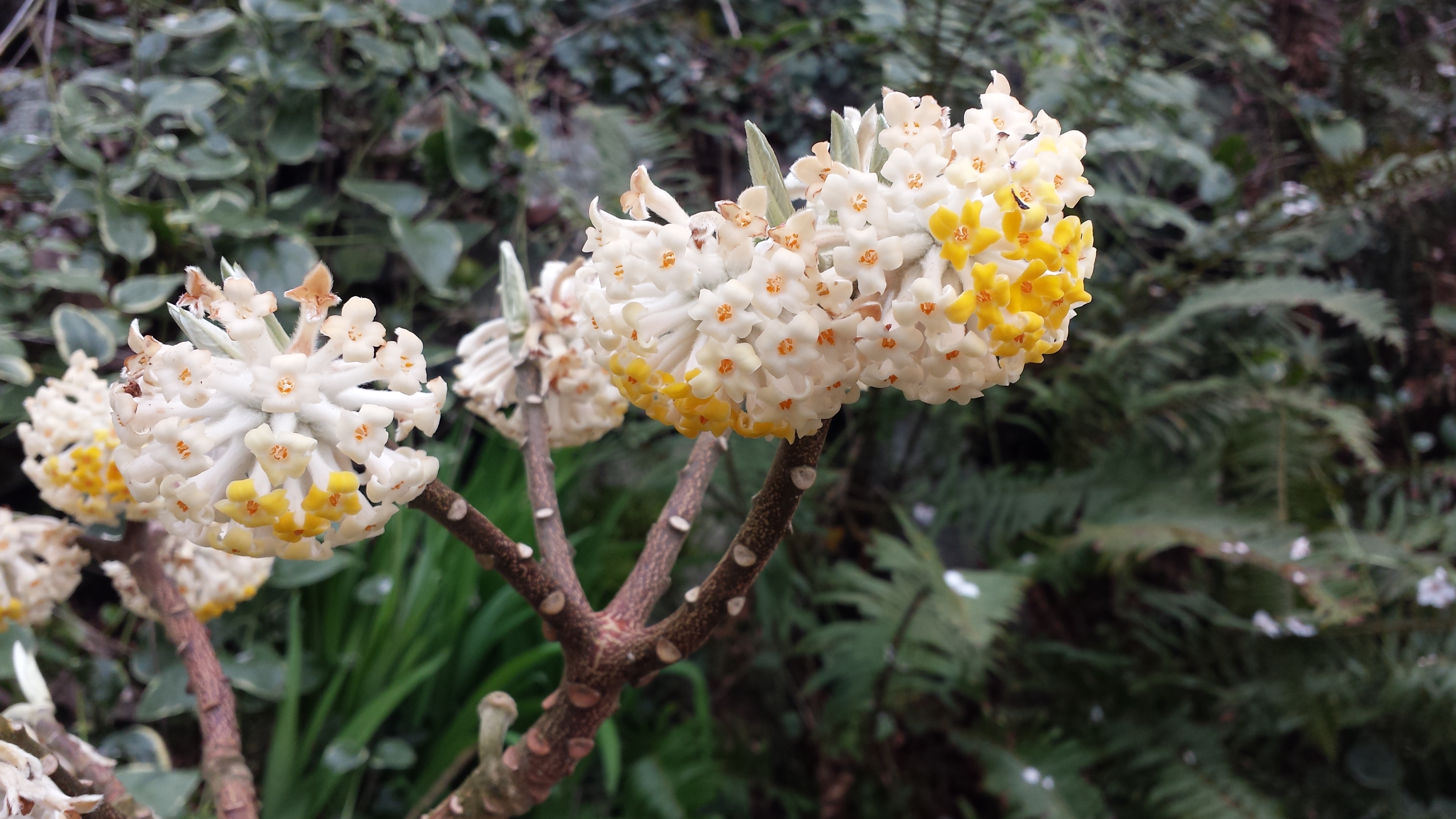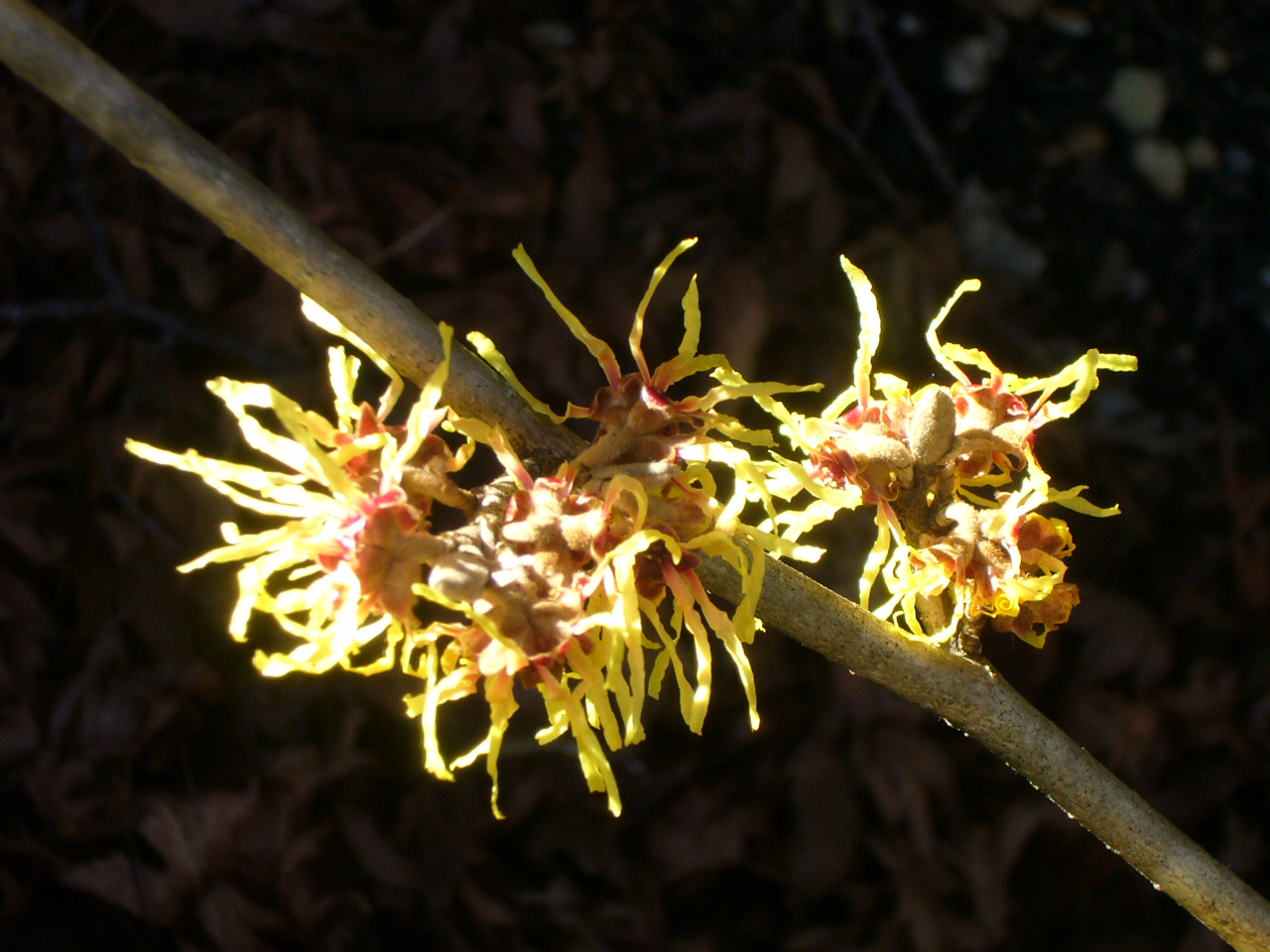Edgworthia chrysantha (Chinese Paper Bush)
Let’s just be honest. Nobody is growing Chinese paper bush for its looks. A few may enjoy its umbrella like habit, or its foliage that is gray green on the bottom and a darker green on the top. The yellow and white flowers are pretty but they quickly turn brown in Seattle’s rainy weather. Edgworthia chrysantha has dark brown cinnamon colored bark, however, in spring and summer (if the shrub is thriving) the branches will be mostly hidden by the foliage.

The reason most gardeners are growing Edgworthia is solely for the intoxicating scent that accompanies its brief late winter blooming period. It will literally stop you in your tracks.

The Edgworthia in the photo above is growing in a shady area along a west facing retaining wall. It extends into the sidewalk so it gets some abuse, and was probably hacked during a past session of “maintenance“.
Paper bush is pliable and can take a little abuse from foot traffic. It is easy to grow but if incorrectly pruned its umbrella shape will be lost and it can become leggy and multi-leveled. From my experience, Edgworthia chrysantha does best with cool, moist roots and dappled sunlight. A somewhat sheltered location would work well. Too much heat or dry soil will cause the leaves to droop.
Edgworthia chrysantha, being a member of the daphne family (Thymelaeaceae), is also known as yellow daphne. Its leaves are somewhat long and pointed like those of other daphnes but they are not as glossy. While other daphnes are evergreen, Edgworthia is dediduous. Chinese native Edgworthia is also called paper bush because its bark is used to make paper. The leaves are used medicinally.
Edgworthia is fairly new to American home gardeners. It was introduced in North America as early as 1845 and then grown as a specimen in botanical gardens. It began to appear in residential settings in the mid to late 1990s.

The flowers appear before the leaves which puts it in a category with other perennials that flower on bare branches such as Chaenomeles (Flowering Quince), forsythia, Hamamelis mollis (Chinese witch hazel) and some varieties of viburnum.

Hamamelis Mollis – Chinese Witch Hazel